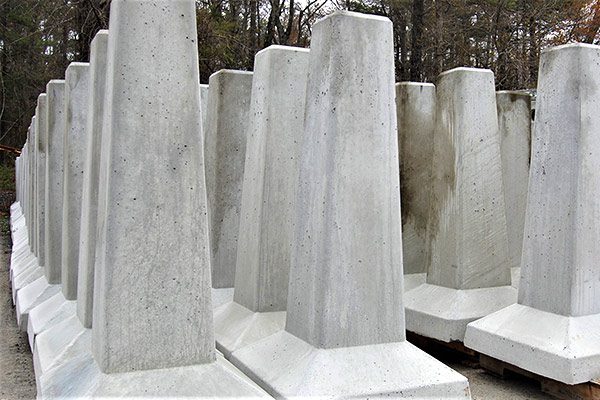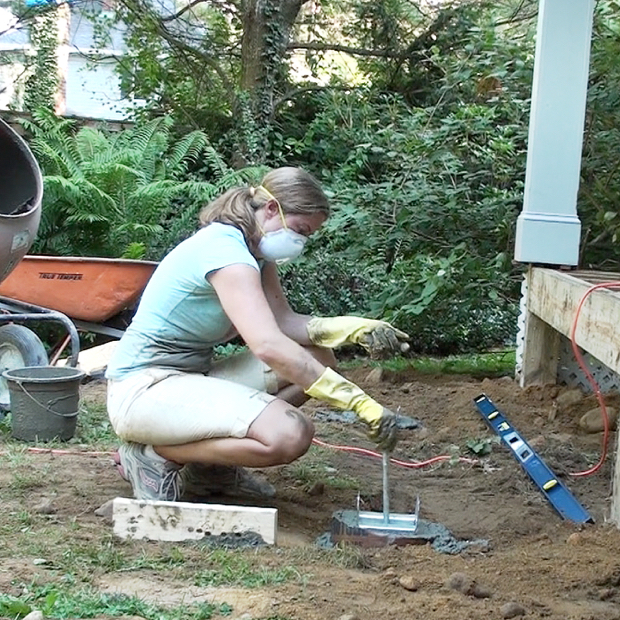Expert Tips for Setting Up Deck Footings to Support Your Outdoor Room
When it comes to constructing a deck, one of the most crucial elements to consider is the installation of correct footings. These grounds are the structure upon which your outdoor room will rest, providing security and assistance for years to come. What specifically does it take to install deck grounds correctly?
Value of Appropriate Deck Footings
Correct deck footings are necessary for making certain the security and durability of your outdoor room. When creating a deck, it is important to take note of the foundation on which it will rest. Deck footings give the needed support for the entire structure and aid disperse the weight evenly - Deck Footings. Without strong and effectively mounted grounds, your deck may come to be unpredictable, bring about safety and security risks and costly fixings.

Along with security, correct deck footings additionally add to the long life of your outside area (Deck Footings). Grounds that are created and constructed to withstand the components and dirt conditions in your location will certainly assist avoid the deck from clearing up or changing in time. By ensuring the grounds are properly sized and mounted, you can decrease the danger of damages to the deck structure, expanding its life-span and lowering the requirement for pricey repair services or replacements

Selecting the Right Sort Of Grounds
When picking the ideal type of footings for your deck, it is necessary to consider factors such as dirt problems, neighborhood building ordinance, and the general layout of your exterior area. The type of footing you choose will certainly play an essential function in making sure the stability and longevity of your deck.
One typical sort of footing is the concrete footing. Concrete footings appropriate for many soil problems and give outstanding support for decks. They are typically installed below the frost line to prevent moving and clearing up as a result of cold and thawing cycles. An additional option is helical piers, which are perfect for locations with unstable soil or high water tables. These piers are screwed into the ground and provide strong support for the deck.
Sometimes, you may need to make use of specialized grounds, such as pile footings or deep foundations, if you are constructing a multi-level or huge deck. These grounds are made to disperse the weight of the deck over a bigger area, making certain security and preventing working out or sinking.
Prior to picking a type of footing, it is necessary to get in touch with local building regulations and policies to make certain conformity. Additionally, think about the style and meant use your outdoor area. Factors such as the dimension, shape, and load-bearing needs of your deck will certainly affect the sort of footing that is most ideal.
Preparing the Ground for Footing Installment
To properly prepare the ground for footing installment, it is essential to examine the dirt conditions and take required steps to make certain stability and longevity of the deck. The primary step is to excavate the area where the grounds will be mounted. The depth of the excavation will certainly rely on the frost line in your region and the details demands of the deck design. It is important to remove any plant life, rocks, or debris from the excavation to make sure a solid foundation.
As soon as the area has actually been dug deep into, the next step is to portable the soil. This can be done utilizing a plate compactor or by utilizing a hand tamper. Condensing the dirt assists to get rid of any type of gaps or air pockets, which can lead to resolving and instability in time.
After condensing the dirt, it is necessary to lay a layer of gravel or smashed stone at the find out here now end of the excavation. This will certainly give drainage and help to avoid water from pooling around the footings, which can cause disintegration and instability.
Step-by-Step Overview to Setting Up Deck Footings
After appropriately preparing the ground for footing installment, the following action is to start the procedure of installing deck footings. This step-by-step guide will supply you with a clear understanding of just how to mount deck footings for your exterior room.
Identify the area: Start by marking the positions of the deck footings using risks and string. Ensure that the areas straighten with the layout and format of your deck.
Dig the openings: Use a post hole miner or an auger to dig the openings for the grounds. The depth and size of the openings must be in accordance with regional building regulations and the particular demands of your deck style.
Level the openings: Utilize a level to guarantee that the holes are dug to the proper depth and are level with each various other. (Deck Footings)
Include crushed rock: Location a layer of crushed rock at the end of each opening to improve drainage and prevent the wood from decomposing.
Place the footings: Place the grounds into the holes, making certain they are degree and plumb. Make use of a level and a gauging tape to ensure precision.
Protect the grounds: Pour concrete right into the holes around the grounds, loading them to the top. Use an article level to guarantee the grounds stay i was reading this level as the concrete collections.
Enable time for treating: Allow the concrete cure according to the manufacturer's guidelines prior to continuing with the deck construction.
Usual Errors to Avoid Throughout Footing Setup
One important element to consider during the installment of deck footings is staying clear of typical blunders that can endanger the security and longevity of your outside room. While deck footings might look like a easy and straightforward part of the construction procedure, ignoring certain aspects can lead to expensive repair services and potential security threats down the line.

In addition, overlooking to mount appropriate water drainage steps can create water to collect around the footings, causing rot, decay, and the ultimate weakening of the deck's structure. Utilizing the incorrect kind of footing product or falling short to appropriately secure the footings can endanger their architectural integrity.
To prevent these blunders, it is necessary to speak with an expert or comply with sector guidelines to guarantee appropriate footing setup. By doing so, you can ensure the stability and durability of your outside room, providing a delightful and safe setting for several years ahead.
Conclusion
Finally, setting up appropriate deck grounds is crucial for the stability and longevity of your outdoor space. By selecting the appropriate kind of grounds and properly preparing the ground, you can guarantee a solid structure for your deck. Adhering to a detailed guide and preventing common errors throughout footing installment will certainly additionally improve the toughness and safety of your deck.
Proper deck footings are important for guaranteeing the stability and long life of your outdoor space. The footings offer as a link in between the deck and the ground, enabling the weight of the deck and its residents to be dispersed equally right into the dirt.One common kind of footing is the concrete footing. Put the footings: Put the grounds into the openings, making sure they are level and plumb. Safeguard the grounds: Put concrete into the openings around the footings, filling them to the top.